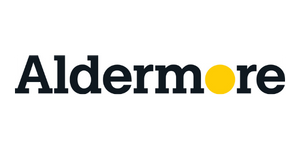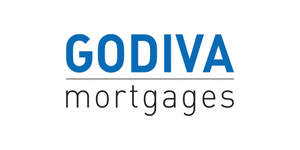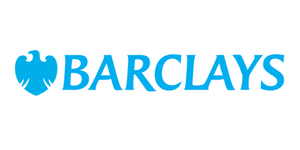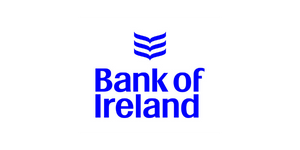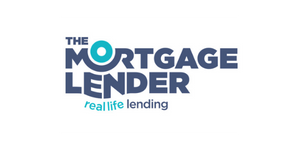Buy-to-Let mortgage guide
We offer access to thousands of mortgages from various lenders, providing exclusive deals. We’re confident in meeting our customers’ needs and promise excellent service in finding the right mortgage deal.
Our Buy-to-Let guide can help you understand the ins and outs of obtaining this type of mortgage
What is a Buy-to-Let mortgage?
Individuals secure a Buy-to-Let mortgage on a property they intend to rent out. The costs and rates on these mortgages are different from standard mortgages.
Furthermore, lenders base approval criteria on personal circumstances and expected rental income.
Buy-to-Let mortgages have become more accessible to smaller investors as lenders have relaxed their lending criteria. With the help of a mortgage broker or adviser, it’s now easier to access a Buy-to-Let mortgage.
Renting out a property has become attractive due to the potential long-term returns. Whether you’re a first-time, portfolio, or a Home in Multiple Occupation (HMO) landlord, there are options available.
How do I compare Buy-to-Let mortgages?
The popularity of Buy-to-Let mortgages has led to a wide range of options for borrowers. There are many resources available to compare rates and conditions and find the right mortgage for your needs.
However, comparing mortgage options is not as simple as just looking at tables. Different borrowers have different priorities and factors to consider, such as duration, deposit amount and rental income.
Specialist lenders may offer deals that are not listed publicly. For Buy-to-Let mortgages it’s best to consult with an experienced mortgage broker. They can consider your needs and recommend suitable options from a variety of lenders.
Can I get a Buy-to-Let mortgage if I don't own a residential property?
Yes you can, although, it may be more difficult for first-time buyers to get this type of mortgage.
Mortgages are also available to limited companies created specifically for property rentals. However, it’s important to understand them and seek advice from a qualified professional.
How do I maximise my Buy-to-Let rental profits?
This is an age-old question and there are various options that you can think about
- Turning your property into an HMO (Home in Multiple Occupation)can really make the rental yields shoot up. This option can work quite well, as you can rent on a per room basis.
- Look for properties that have good rental yields. Purchasing a property for say £250,000 may seem like a good idea as you may be able to rent it for approximately £850 per month. However, purchasing two properties for £125,000 each that rent for say £550 per month will provide you with more profit in the long
- Getting the right mortgage advice is just as important when looking to maximise your rental profits. An experienced mortgage broker can help you access the most suitable mortgage rates for your needs as well as compare the small print.
- Choosing an interest-only mortgage over a repayment mortgage is another way to boost your rental profits. While a repayment mortgage will reduce your balance over the course of the mortgage, it does eat into the profit you make on a month-to-month basis. An interest-only mortgage on the other hand means you will only pay the interest element of your mortgage payment every month to the lender.
There are pros and cons to both types of mortgages, hence why it is important to get the correct professional advice.
What's the best, fixed or tracker Buy-to-Let rates?
The choice between a fixed rate and a tracker rate mortgage depends on how risk averse the landlord is. A fixed rate offers stability but may have a slightly higher interest rate, while a tracker rate may be cheaper but carries the risk of rising with the Bank of England base rate.
Depending on your circumstances one option may suit you better. Get in touch today and one of our expert advisers can discus your options with you.
How do I qualify for a Buy-to-Let mortgage?
Typically, lenders design Buy-to-Let mortgages for individuals purchasing or remortgaging a residential investment property. They also usually occupy their own home, with or without a mortgage.
It may be harder for first-time buyers, but not impossible. Mortgages are also available to limited companies, with eligibility requirements varying between lenders. ‘Limited company’ Buy-to-Let products will suit certain individuals more than others.
It’s good to seek advice from a qualified accountant or tax specialist before deciding.
Protect Your Investments and Financial Future

Foreign National Mortgages

Self-Employed Mortgages

Bridging Loans

Life Insurance
Can I get a Buy-to-Let mortgage on any property?
Buy-to-Let mortgages are available for various property types, but some properties may require a specialist approach.
Leasehold properties are acceptable if the lease has at least 70 years remaining. Lenders generally do not consider mobile homes and houseboats suitable as security.
Certain types of properties, like studio flats and ex-local authority flats, may require a specialist lender. Lenders may also consider other properties in the same area.
Each lender has a different approach, so it’s important to discuss your situation with a specialist mortgage adviser. They can help you find the right solution and avoid multiple rejections.
Can I get a Buy-to-Let mortgage on a leasehold property?
The short answer is yes. Leasehold properties are similar to freehold properties if there is a suitable lease in place. However, leasehold properties have additional costs such as ground rent and service charges. The remaining term of the lease can affect the property’s value and eligibility for a mortgage.
Lenders consider leasehold charges when calculating the affordability of a loan. It is important to be aware of ongoing costs and potential increases that could limit investment income. Lenders are less willing to accept leaseholders with a significant stake in the freehold.
Are Buy-to-Let mortgages more expensive?
Buy-to-Let mortgages have higher costs compared to regular mortgages. Buy-to-Let mortgage rates are higher and lender completion fees can be as little as zero or up to 5% of the loan. However, lower fees usually means the lenders will charge a higher rate of interest. This can affect the amount you can borrow and also have a negative impact on your rental profit.
At IMC Mortgage Brokers, our advisers will assess your rates, loan size and fees to find a solution that suits your needs.
Most borrowers choose an interest-only basis for tax efficiency and budgeting purposes. This implies that the loan capital remains constant, leading to the payment of more interest over the term.
What are the costs for a Buy-to-Let property?
Considering ongoing costs such as income tax and capital gains tax is crucial . Recent changes in tax calculations have led to an increase in popularity of limited company Buy-to-Lets. This has allowed many landlords to maximise their profits.
As a landlord, you have a legal responsibility to your tenants and must budget for property maintenance. If you have an HMO, there may be additional costs.
Managing the property yourself can keep costs down, but using an agent will incur fees. If getting a Buy-to-Let mortgage for a limited company, remember you’ll be subject to corporation tax. Registering the company and hiring an accountant will also have costs.
There will also be costs for your initial purchase. These are likely to be, but not limited to:
- Solicitors’ fees.
- Mortgage arrangement fee.
- Property survey.
- Stamp Duty Land Tax (SDLT) – this will likely be inclusive of the higher second property surcharge.
- Mortgage broker fees where applicable.
- Decorative costs/improvements. – these may be a necessity to ensure you comply with Minimum Energy Efficiency Standards.
Having a mortgage is a necessary cost for many Buy-to-Let investors. It should be factored into your budget, including during periods of rental voids.
How much deposit do I need for a Buy-to-Let property?
The minimum deposit needed for a Buy-to-Let property purchase is generally 25%, although some lenders may accept 15%. However, lenders rely on the property’s rentable value to determine the amount that can be borrowed.
If the rentable value is lower than the required mortgage amount, a larger deposit may be necessary. Some lenders also factor in overall affordability, allowing other income to cover any rent shortfall. This is referred to as “top slicing”.
Product transfer on Buy-to-Let mortgages
Buy-to-Let investors need to consider mortgage costs and monthly payments when budgeting. Many mortgages have an end date, after which the loan reverts to a higher standard variable rate (SVR).
Borrowers can choose to remortgage with another lender, but the current lender may also offer a product transfer. IMC Mortgage Brokers considers both options and recommends the best choice for the borrower’s needs. The main factor is the overall cost, but there are additional benefits to staying with your current provider.
Buy-to-Let mortgage Lenders
Buy-to-Let Mortgages are a specialist area of lending. In the past, if you wanted a Buy-to-Let Mortgage then you would have needed to find a specialist lender, and more often than not, they would only provide Buy-to-Let Mortgages.
This has now changed, and the availability of lenders is plentiful. The specialist lenders still remain in place, and they are still the ones that provide some of the most dynamic product and criteria spread. On top of the specialist lenders, quite a number of high street lenders now have plenty of options available.
At IMC Mortgage Brokers we have access to enough mortgage lenders from across the market to be able to find not only the most suitable lender, but also the most suitable rate for your circumstances.
Buy-to-Let mortgage brokers
Buy-to-Let mortgages are complex and require specialist advice. Today’s mortgage market contains a huge number of products suitable for all kinds of borrowers, supplied by a very wide range of lenders.
Each lender has different criteria, therefore it’s important to choose the right one for you. Applying to too many lenders can harm your credit rating, so it’s best to use a mortgage broker who understands the market.
At IMC Mortgage Brokers we can help you find your ideal mortgage, providing you with essential Buy-to-Let advice that can help you obtain a mortgage product.
- - Can I port Buy-to-Let mortgage?
- - Can I Get a Buy-to-Let Mortgage with Bad Credit?
- - Can I get a Buy-to-Let mortgage with bad credit?
- - Can foreign nationals get a Buy-to-Let mortgage?
- - Can an expat get a Buy-to-Let mortgage?
- - Can I get a Buy-to-Let mortgage on a new-build property?
- - Do I pay more Stamp Duty when buying a Buy-to-Let property?
- - How many Buy-to-Let mortgages can I have?
- - What is a regulated Buy-to-Let mortgage?



